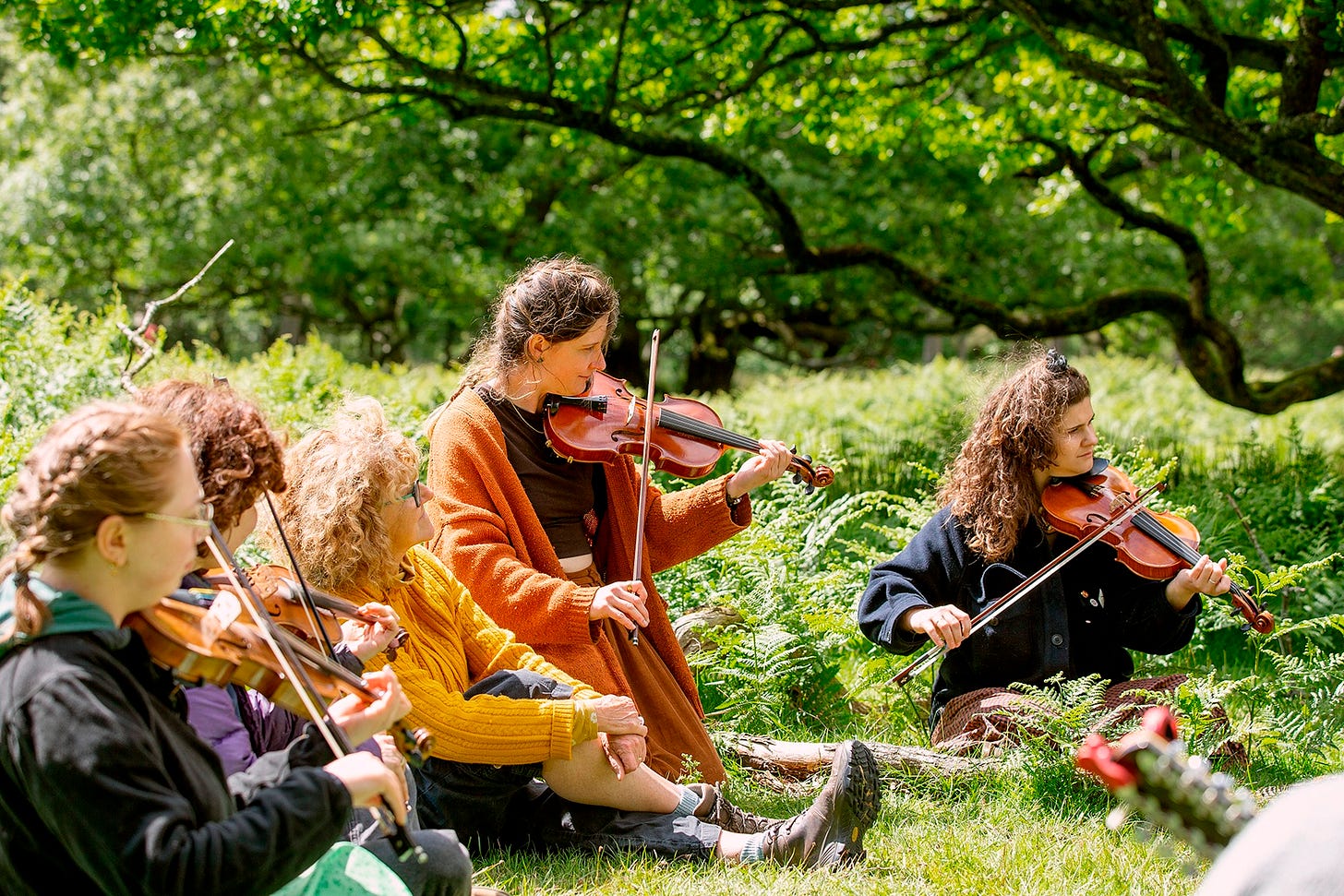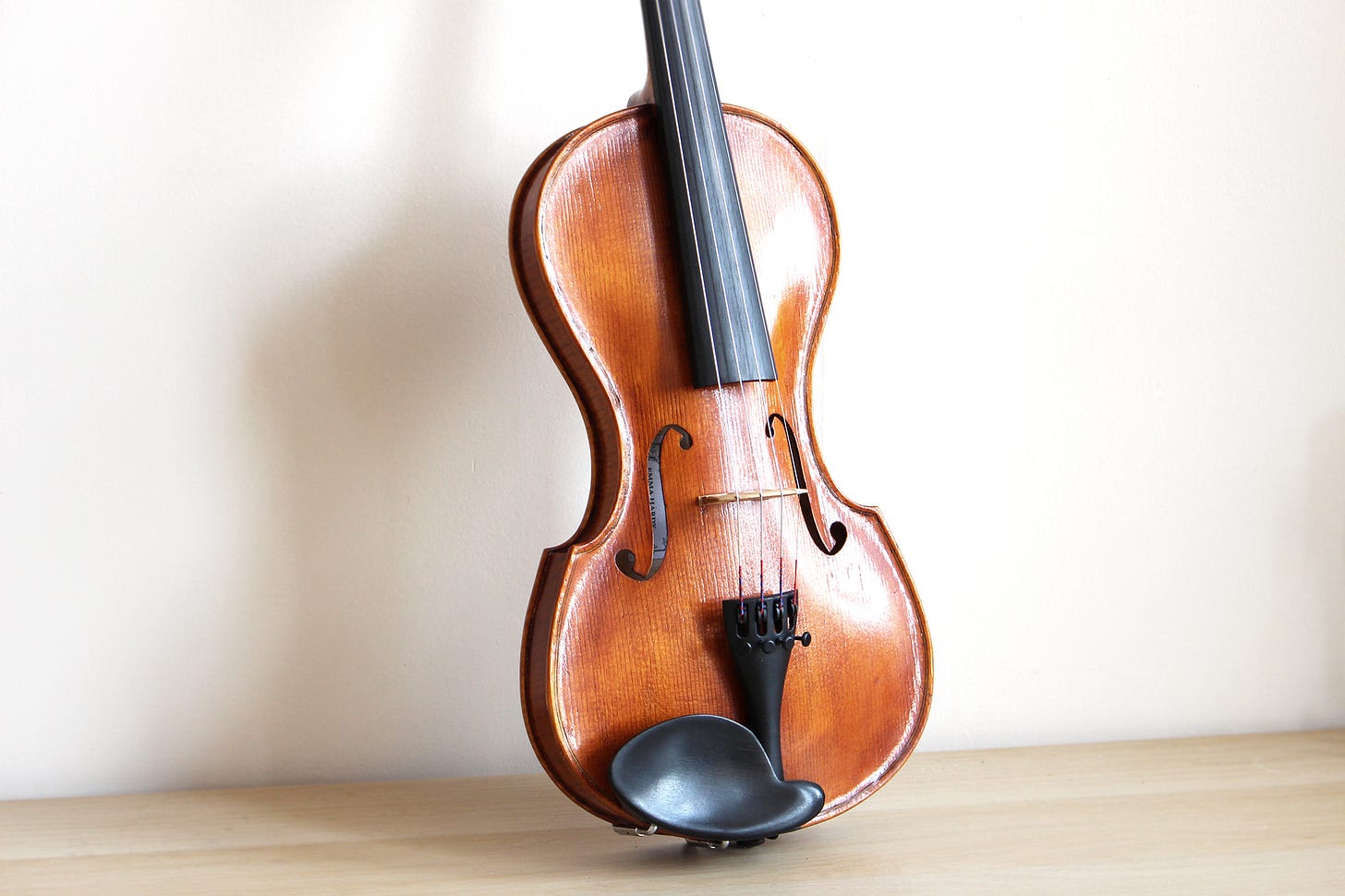What is a Fiddle?
Short answer: A violin. Long answer...
I’m often asked about the difference between a violin and a fiddle, and the short answer is this: they’re the same thing.
But there’s a slightly longer answer, too…
The history
Fiddle is one of those words with multiple meanings across multiple contexts. There were many precursor instruments to the violin, including the vielle (originating in France) and fidula (originating in Germany) these words morphed along with the instruments into violin and fiddle respectively, but the various iterations were –often to the frustration of historians– used to describe a broad array of instruments.
Over the past few hundred years the definitions narrowed, and a violin became what we all now know of as a violin, and fiddle/fiddler began being applied to describe non-classically trained violinists, primarily those playing folk music.
The violin and fiddle may technically be the same instrument, but I’ve noticed a few differences in practice, as the musical context in which the instrument is played influences the choices made by both the maker and the musician.

The set up
I’ve frequently had folkies request bridges with slightly less curve in them, to allow for easier double stopping. String choices are often very different, with folk players more likely to aim for a bright vibrant sound over a moody mellow one.
There’s also a variety of pickups which can be added; folk players are more likely to be playing with non-acoustic instruments, so to keep up with the volume they need a pick up.
Geared pegs are popular with folk players, allowing for easy retuning when pegs might otherwise get stroppy in varying weather/temperature environments. A sturdy oil varnish is also a necessity in this regard. I’ve seen instruments with water-based varnishes that are quickly ruined when sweat/beer/rain is inevitably thrown into the mix.
The arching/model
Although all performers need to be able to project their sound, as mentioned before, folk players are often mic’d up as they play alongside non-acoustic instruments. This means having an instrument that can hit the back of a concert hall unaided is slightly less important.
The average folk player is more likely to be playing with a group in a pub and so they need to be able to play without completely dominating the room. A higher arching style on the front and back suits this kind of sound better.
The spirit of the making
This one’s a slightly hard one to pin down, but when I’ve spoken to folk players about their instruments, they often focus on the story behind it. Classical players do this too, but folk players are definitely more open to unusual shapes and materials.
I think of this a bit like contemporary dance vs ballet. Ballet dancers need to wear the same clothes and perform as a unit, whereas contemporary dancers are less constrained by uniformity. Both are beautiful art forms, but like contemporary dance, I think folk players have a lot more freedom of expression built into their format.
Many fiddle makers I’ve seen focus on story and/or decoration. Folk music is largely about oral traditions – so having an instrument that itself has a story behind it reflects the musicians themselves.
‘Story’ can mean anything from the wood used, how the wood was gained, to the model or reason for the instrument to have been made. As long as the instrument is well constructed, with care taken to ensure it’s of a professional standard, neither approach is ‘better’ than the other, they’re just different and serving different musicians.
In conclusion…
I want to emphasise that these are not rigid rules, but rather general guidelines. A classical player might thrive with a ‘fiddle,’ just as a folk musician could find a perfect fit with a more traditional classical instrument. While labels can be helpful, they shouldn’t be seen as definitive.
Music is highly subjective, and in the end, the best way to find the right instrument is simply to play it and see how it feels for you.



